Experimental aircraft X-59 QueSST is preparing for testing
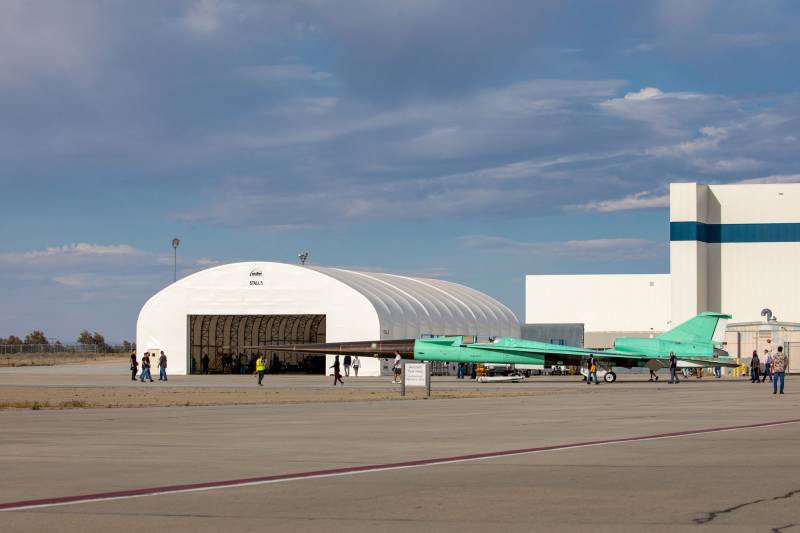
Ready X-59 withdrawn from the shop, June 19, 2023
NASA and Lockheed Martin continue their work on the QueSST research program. Its task is to find solutions and technologies for creating advanced supersonic aircraft with optimized aerodynamics and reduced noise. In particular, it is planned to drastically reduce the shock wave when flying at supersonic speed. To date, the QueSST program has passed the stage of building an experimental aircraft. Testing will begin soon.
Completion of construction
NASA launched the QueSST (Quiet Supersonic Technology) program at the beginning of the last decade. Its goal is to find and develop solutions and technologies to make supersonic aircraft less noisy and reduce the negative impact on ground facilities. The first few years were spent on research and laboratory testing, after which the construction of a technology demonstrator aircraft began.
As a developer of a flying laboratory, Lockheed Martin has been participating in the QueSST program since 2016 through the Skunk Works Special Projects Department. In the mid-59s, based on research data, she created a project for an experimental aircraft with the X-XNUMX index. At the same time, the first components of the future aircraft were manufactured and tested.
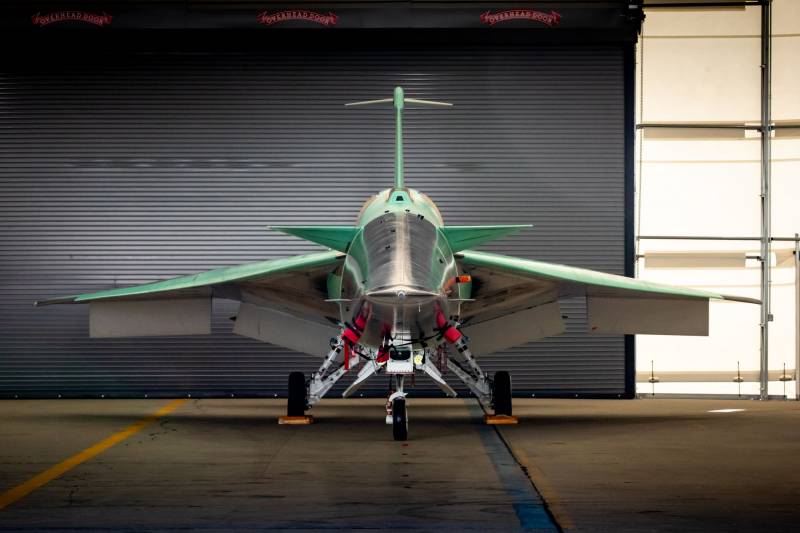
Characteristic front view
Full-scale construction of the experimental X-59 began by the end of 2018. On the slipway of the Lockheed Martin plant in Palmdale, the characteristic contours of the fuselage and wing of the optimal shape were gradually formed. The necessary equipment was also installed. At the same time, the manufacturing company was in no hurry, which affected the timing of the work. In addition, there were difficulties and delays due to which the aircraft could not be assembled in 2022 and flown before the end of the year.
However, the planned work was completed. Last year, the assembly of the main part of the airframe was completed. Also, the aircraft received most of the flight and other equipment, incl. part of fundamentally new systems. We did some work on setting up the equipment. In November 2022, an engine was installed on the car. By mid-April 2023, the assembly and installation of the rear fuselage was completed.
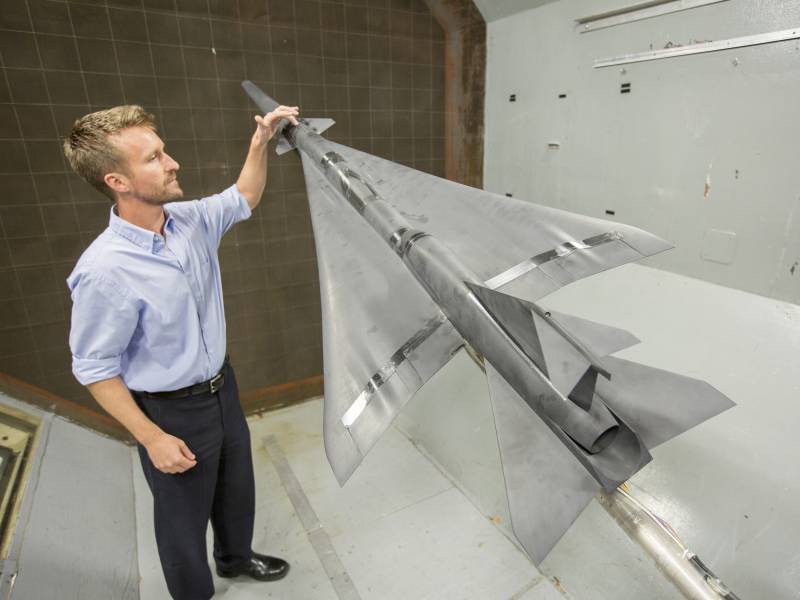
At the stage of testing in a wind tunnel, 2018
In the first half of June, the assembly of the prototype aircraft was completed. It was removed from the stocks and lowered onto its own chassis. In the middle of the month, the X-59 was transferred from the assembly shop to the flight test station. Now it is being prepared for future ground tests, after which flights will begin. It is assumed that the first flight will be carried out before the end of this year.
Experimental look
The purpose of the QueSST program is to reduce the shock wave and reduce the noise of the aircraft during supersonic flight. This problem is proposed to be solved by optimizing the aerodynamic shape of the aircraft with the introduction of new interesting ideas. As a result, the machine is built according to one of the well-known schemes, but differs markedly from other equipment of this kind.
The X-59 is a single-seat, single-engine aircraft 29 m long with a wingspan of 9 m. The maximum take-off weight is 14,7 tons. Most of the components and assemblies were developed from scratch, but some elements were borrowed from serial equipment. So, a modernized serial engine is used, a single-seat cockpit canopy and an ejection seat were taken from the T-38 training aircraft, and a three-point landing gear from the F-16 fighter.
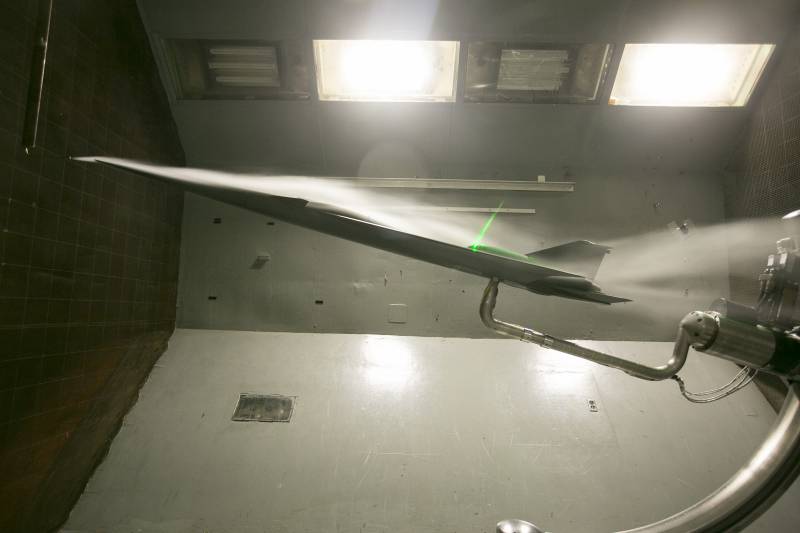
The aircraft received a large elongation fuselage with characteristic contours. It is distinguished by an extremely long pointed nose cone - it takes up about a third of the total length of the machine. In the tail is a turbojet engine. To optimize the flow processes, the engine is placed in an elliptical gondola above the fuselage, and the nozzle is located above a special lower plane.
The planes are built according to the "longitudinal triplane" scheme. At the rear of the fairing, in front of the cab, there is a swept forward horizontal tail. Almost immediately behind it is a wing with a variable sweep of the leading edge, and a tail stabilizer is provided below the engine. On the engine nacelle there is a keel with an additional plane at the tip. The wing has traditional mechanization on the trailing edge, and two sets of stabilizers are all-moving.
Especially for the X-59, General Electric developed a new modification of the F414 turbojet engine. The F414-GE-100 features new software, revised piping and other mounting hardware. At the same time, the main units do not change, and the characteristics remain at the same level. Due to the afterburner thrust at the level of 10 thousand kgf, the aircraft at an altitude of more than 16 km will be able to reach a maximum speed of Mach 1,5 and a cruising speed of Mach 1,42.
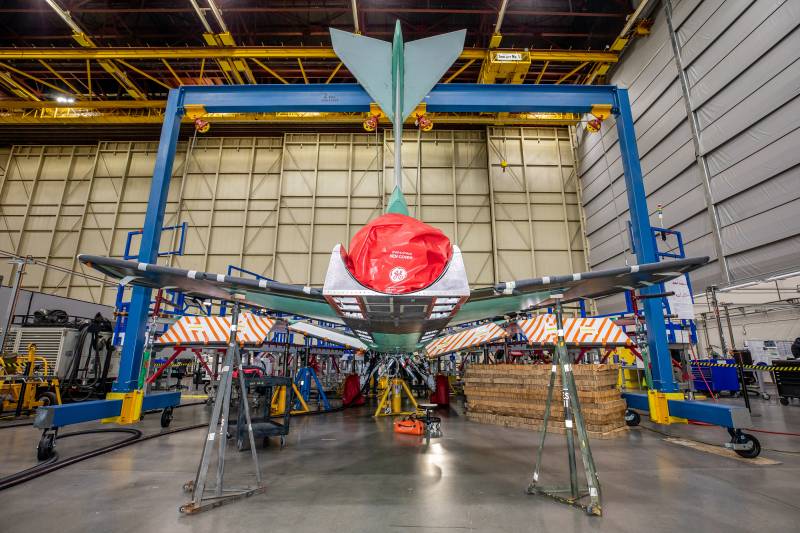
Aircraft after engine installation, November 2022
A characteristic feature of the X-59 airframe is the absence of a protruding canopy. This improves the flow around the nose and the central part of the fuselage, but closes the pilot's view forward and down. In this regard, the original video viewing system eXternal Vision System (XVS) has been developed. A 4K video camera is mounted on the nose fairing in front of the cockpit. Under the fuselage is a Collins EVS3600 video system with a day and night channel.
The entire set of optoelectronic components will provide maximum visibility of the front sector "through" the fairing. The combined image from all cameras will be displayed on a large-format monitor in front of the pilot. Such a monitor will actually replace the visor of the lantern and provide the necessary level of visibility.
New solutions
In the near future, the experimental X-59 will undergo the necessary checks on the ground, and flight tests are scheduled to begin by the end of the year. During these events, the aircraft will show the performance of new ideas and their potential in terms of practical application. If these solutions and components show themselves well, they are used in the following supersonic or other projects. aviation techniques.
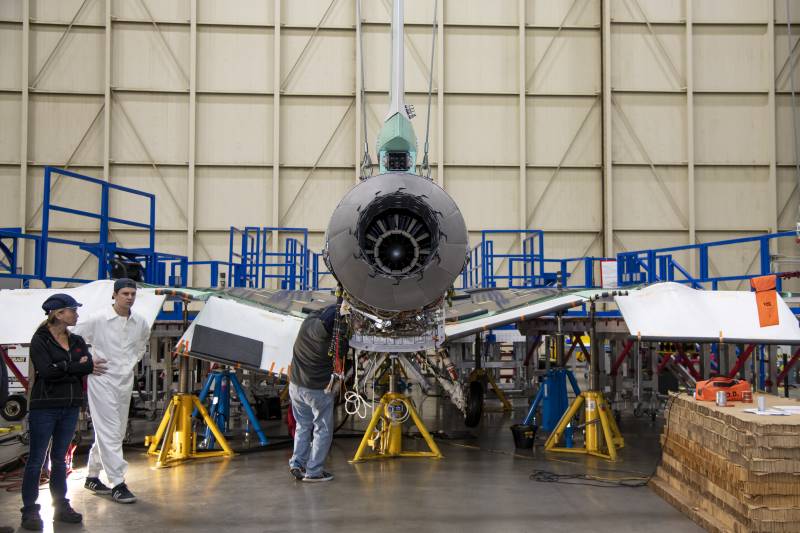
Tail assembly, April 2023
For example, the XVS review system is of great interest from the point of view of further application. It is assumed that a set of cameras and a monitor will become a full-fledged replacement for a traditional canopy and will fully ensure the observation and control of the aircraft. The XVS has already passed the tests on the bench, and now it is necessary to test it in a real flight.
However, the main task of the X-59 is to work out the original aerodynamic appearance with specific contours of the nose cone and planes. It is assumed that the elongation of the fuselage due to the fairing will make it possible to spread the shock waves that occur during supersonic flight in space. This distance will be sufficient so that the two shock fronts do not combine into one sonic boom and do not reinforce each other. In turn, the design of the fuselage, planes and engine nacelle optimizes the flow around and eliminates the formation of additional sources of noise.
According to calculations, when the X-59 aircraft is flying at altitude, the observer on the ground will record the shock wave with a loudness in the range of 60-75 dB. In comparison, a typical fighter jet under these conditions generates 90-100 dB of noise. It should be remembered that a difference in volume of 30 dB is equivalent to a difference in sound intensity of 1000 times.
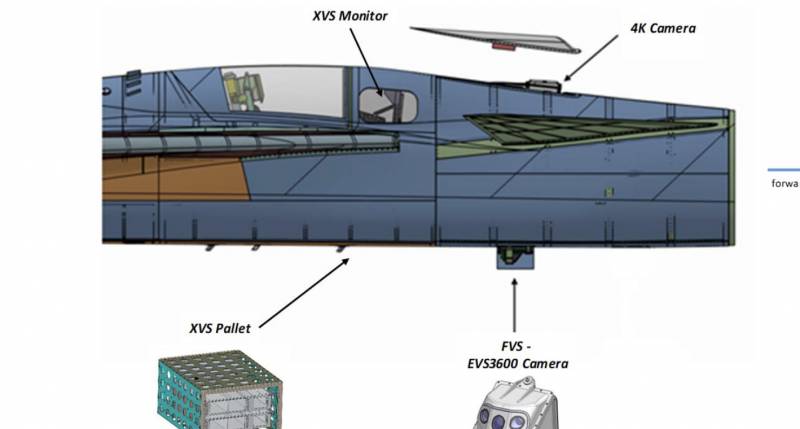
XVS System Layout and Components
Technical solutions that dramatically reduce noise can be used in the development of promising supersonic aircraft for various purposes. First of all, the creators of civil aircraft should be interested in them. At one time, the shock wave prevented the development of civil supersonic aviation: it limited the possible flight areas and did not allow the construction of a developed route network. If the volume of the wave can be reduced, civil aviation will receive new opportunities.
Pending Results
One of the tasks of the NASA agency is the development of new technologies and solutions, which will then be used in real aviation projects. The QueSST program pursues just such goals. With its help, research and practical experiments will be carried out, which will show the efficiency and potential of new unusual solutions in the field of aerodynamics and avionics.
According to the results of preliminary tests of individual components on the benches, QueSST program participants make positive assessments and look to the future with optimism. However, the results of laboratory tests and theoretical studies need to be confirmed during full ground and flight tests of the technology demonstrator aircraft. The construction of the experimental X-59 has already been completed, and its flight tests are now a matter of the very near future.
Information